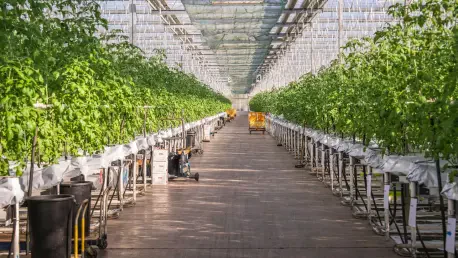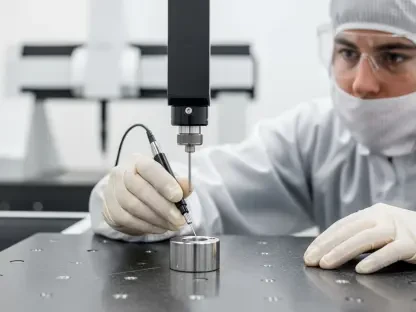Setting the Stage for Agricultural Transformation
In a landscape where India grapples with a staggering 6 million-tonne annual dependency on imported fertilizers, the push for self-reliance in agriculture has never been more critical, as this dependency not only strains economic resources but also poses risks to food security amid global supply chain uncertainties. Paradeep Phosphates Ltd, a Bhubaneswar-based fertilizer powerhouse, emerges as a key player with an ambitious plan to scale nano-fertilizer production tenfold, targeting 10 million bottles annually. This market analysis explores the implications of this strategy, delving into current trends, data-driven projections, and the broader impact on India’s agricultural sector. The focus is on understanding how such a bold move could reshape market dynamics and address long-standing challenges in fertilizer supply.
Unpacking Market Trends and Strategic Insights
Nano-Fertilizer Boom: A Shift in Agricultural Inputs
The Indian fertilizer market is witnessing a robust growth trajectory, expanding at an annual rate of 9-10%, fueled by the urgent need to ensure food security for a growing population. Nano-fertilizers, such as nano-urea and nano-DAP, are at the forefront of this transformation due to their high nutrient efficiency, requiring smaller quantities per acre compared to conventional options while delivering enhanced crop yields. Paradeep Phosphates’ current production stands at a capacity of 5 million bottles annually, with plans to double this output through a new facility in South India, potentially in Karnataka, within the next three years. This surge aligns with a rising acceptance among farmers in regions like Maharashtra, Karnataka, and northern India, where the benefits of reduced input costs and improved productivity are becoming evident. The trend suggests a pivotal shift toward innovative inputs that could redefine farming practices.
Domestic Capacity Expansion: Reducing Import Reliance
A critical aspect of the market landscape is the projected increase in domestic fertilizer production capacity by 4-5 million tonnes over the coming years. Paradeep Phosphates is positioning itself to manage a significant share of this growth, aiming to curb India’s reliance on imports through strategic expansion. Beyond boosting nano-fertilizer output, the company is enhancing self-sufficiency in raw materials, currently meeting 90% of its phosphoric acid needs with an annual production of 500,000 tonnes, set to rise to 700,000 tonnes by 2027. Additionally, sulfuric acid capacity is slated to grow from 1.3 million to 1.9 million tonnes by mid-2026. While challenges like global price volatility for remaining imported materials persist, particularly for the Goa facility’s P2O5 supply from Morocco, this focus on local sourcing offers a competitive advantage and signals a broader industry move toward resilience.
Innovation and Specialization: Tailoring Solutions for Farmers
Innovation remains a cornerstone of market evolution, with companies like Paradeep Phosphates developing specialized NPK fertilizer grades, such as the 19-19-19 formulation, designed for cash crops and horticulture. This customization reflects a growing demand for targeted solutions that cater to specific agricultural needs, enhancing productivity for advanced farmers. Complementing this trend is a strong emphasis on farmer engagement through training institutes and independent testing farms near Bhubaneswar, fostering the adoption of modern practices. However, regional disparities in awareness and access to these advanced products pose hurdles, necessitating sustained education efforts. The market is thus leaning toward a model where technology and farmer empowerment intersect, creating a more adaptive and informed agricultural base.
Sustainability as a Market Driver
Environmental, social, and governance (ESG) principles are increasingly shaping the fertilizer industry, moving from optional considerations to core business imperatives. Paradeep Phosphates integrates sustainability into its operations, focusing on efficient resource use and reduced environmental impact through nano-fertilizer technologies. This alignment with ESG standards not only meets regulatory and societal expectations but also appeals to a market increasingly driven by conscious consumerism and policy incentives for green practices. Projections indicate that if nano-fertilizers continue to demonstrate efficacy, they could dominate market share within a decade, fundamentally altering how the industry balances productivity with ecological responsibility. This shift presents both an opportunity and a challenge for competitors to adapt swiftly to sustainable models.
Reflecting on Market Implications and Strategic Pathways
Looking back, this analysis of Paradeep Phosphates’ strategy reveals a transformative moment for India’s fertilizer market, where a tenfold increase in nano-fertilizer production marks a significant step toward reducing import dependency. The examination of market trends underscores a robust growth rate and a shift toward innovative, efficient inputs, while capacity expansions and raw material self-sufficiency highlight a path to greater resilience. Innovation and sustainability emerge as key drivers that shape competitive dynamics and farmer engagement. For stakeholders, the insights suggest actionable steps like investing in farmer education to accelerate technology adoption, forging partnerships for localized raw material sourcing, and advocating for supportive policies to boost domestic production. These strategies offer a roadmap for aligning with broader goals of agricultural self-reliance, ensuring that the industry moves forward with both economic and environmental priorities in mind.









